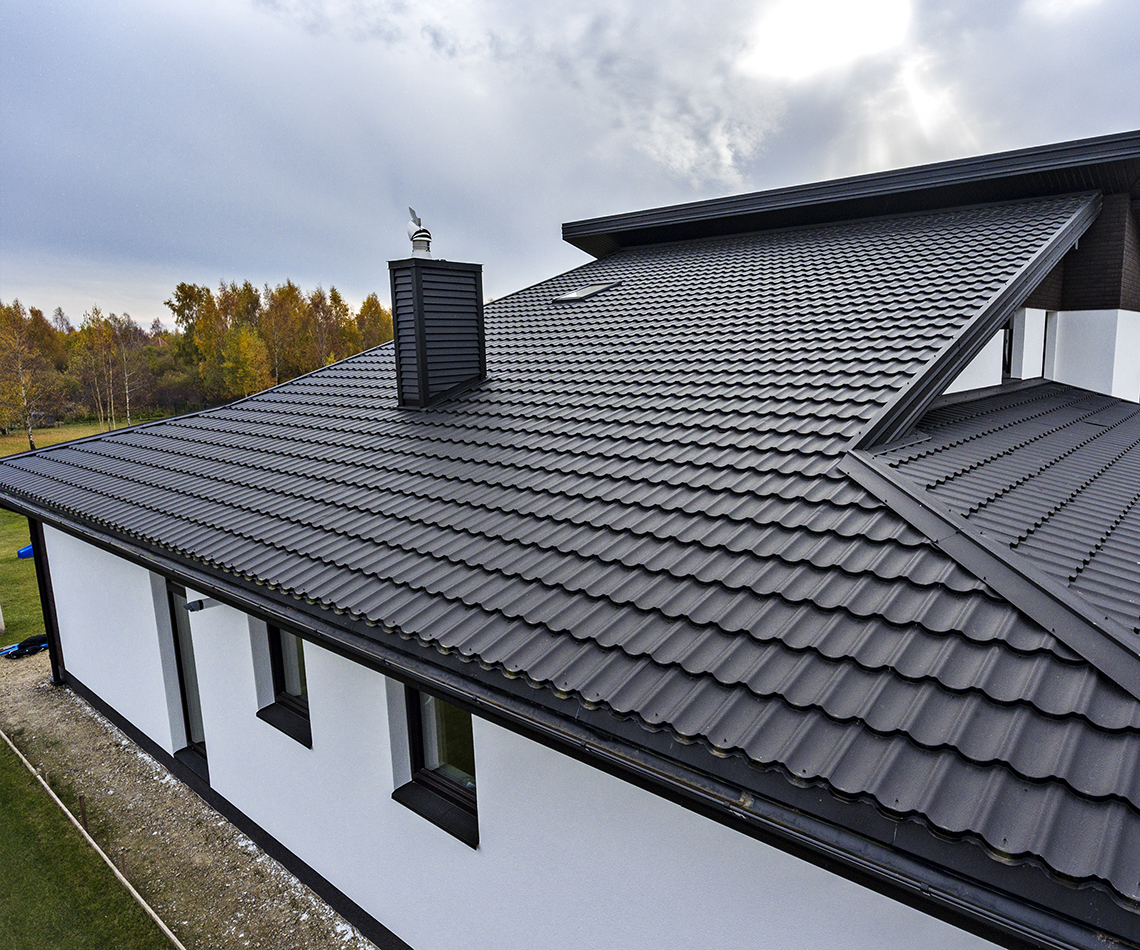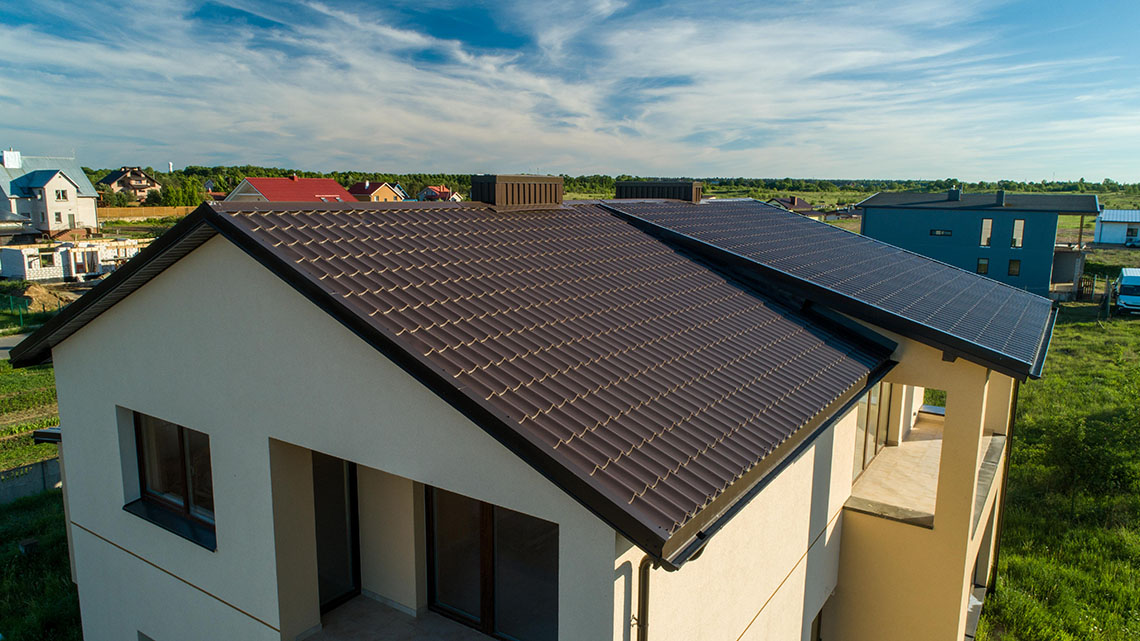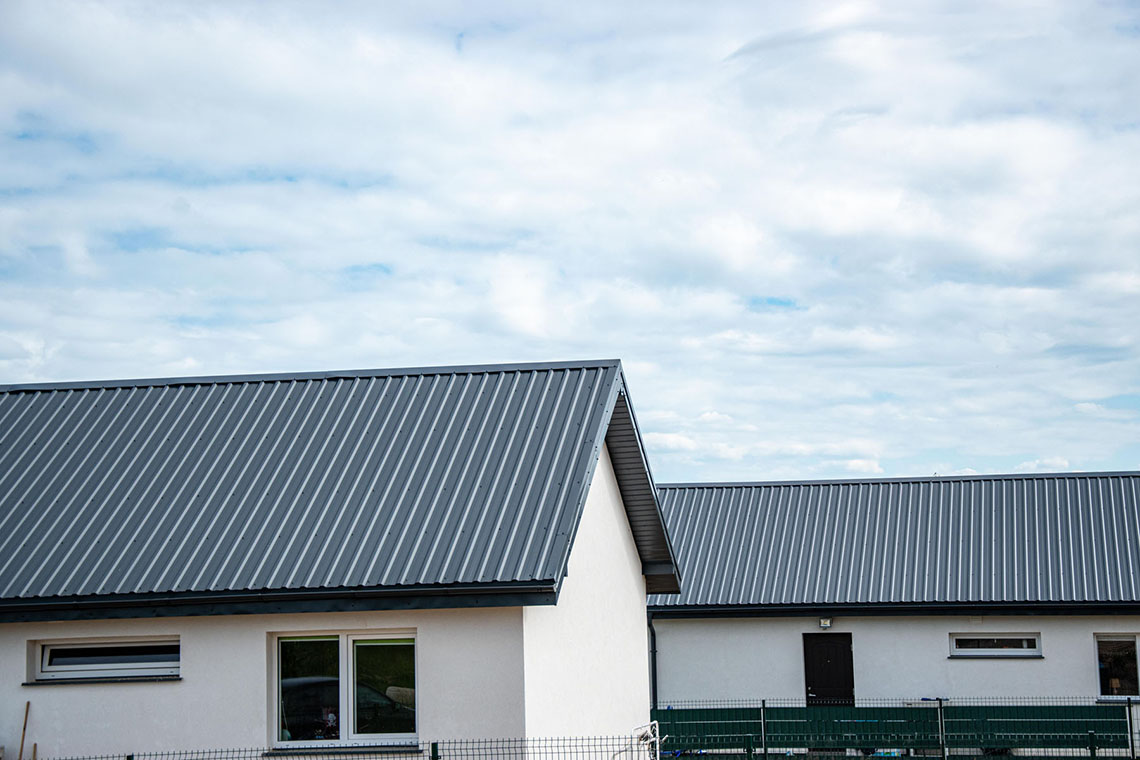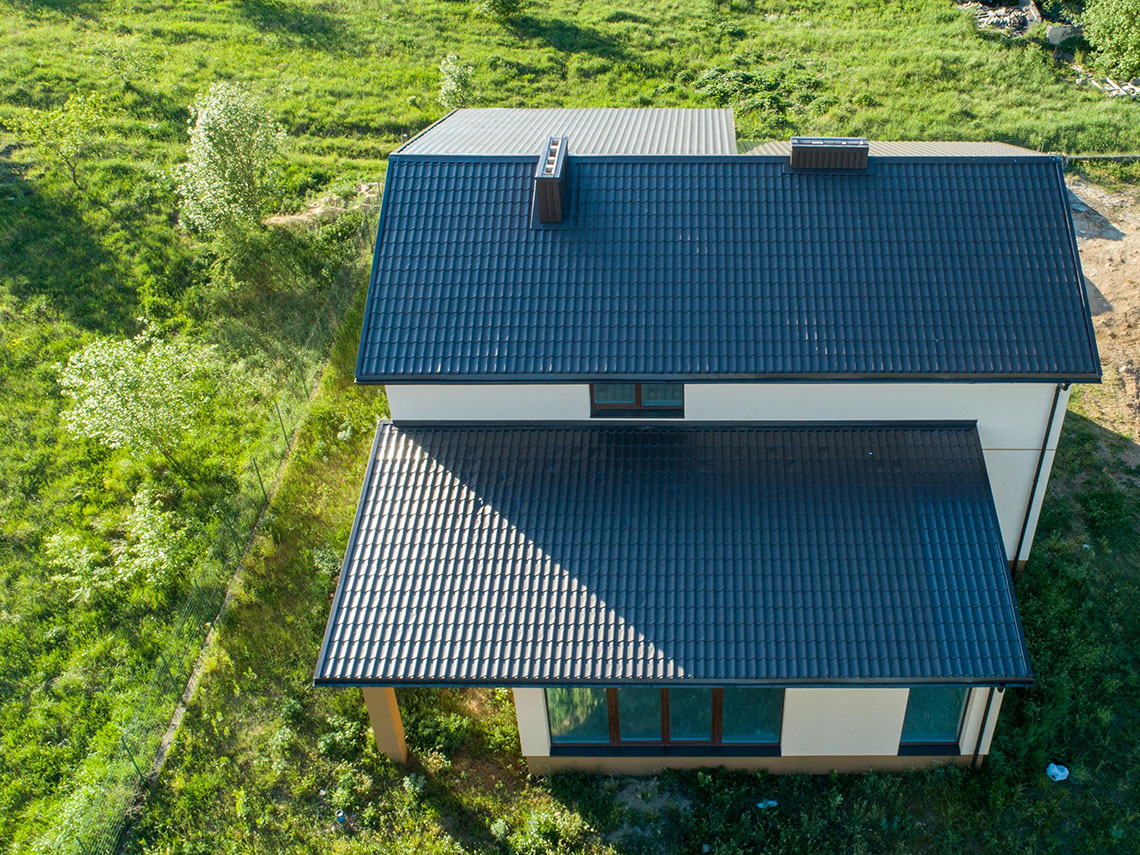What determines the choice of roofing material – a practical guide
Over 25 years of activity
200 employees
3,000 points of sale across Europe
Most people facing the need to choose a roofing have no technical knowledge or experience with this type of purchase. Let’s be honest – a significant part of people will have to choose roofing material only once in their lives. One should remember that making of the roof structure, including material and labor costs, consumes a large part of the budget for both construction of a new house and renovation of the existing building. So it’s worth the effort to make sure that choice of roofing material is thought-through. Thanks to that buyers will be able to use the house for many years without problems resulting from poorly selected material. It is for such people that we have prepared our guide. We will explain in it, using simple language, what characterizes individual roofing materials. We will show you the advantages and disadvantages of all the most popular roofings – roof tiles, steel roof tiles, seam panels and trapezoidal sheets. In addition to the characteristics of the materials, we will suggest for which type of roofs, large-format coverings are most suitable, and when it is worth tochoose small-format materials. Analysis of our tips and tricks will help you make the right, and most importantly, conscious choice of roofing material.

Angle of the roof slope
When planning the choice of roofing material, you should know the basic parameters of the roof, i.e. the roof slope angle. In the product card, manufacturers always specify the maximum and minimum angle of the roof slope. The most common values are described in the characteristics of individual materials.
Climatic factors
It is worth taking into account the climatic conditions in your region – intensity of snowfall, and thus duration of snow cover, have a decisive influence on the choice of roofing material. In addition, intensity of wind and rainfall should be taken into account. It is worth following the principle that the greater the frequency of snowfall and the longer snow cover remains, the steeper the roof should be. This will be an effective protection against overloading the roof structure.
Noise suppression efficiency
Roofing materials differ also in terms of noise reduction efficiency. The best ones in this respect are massive materials, i.e. concrete and ceramic tiles. Sheet metal is the worst material for reducing noise. The acoustic factor should be taken into account mainly in houses with usable attic. In other cases, this is slightly less important.
Difficulty of construction
Individual types of roofings also differ in terms of difficulty of construction. So if you want to save money and to hire a beginner roofer, choose a material that is easy to install. This should not be ceramic tile that requires great accuracy and skill. Roofing materials used less frequently, e.g. slate, also require more skills. Choice of metal roofing tiles or trapezoidal sheets should not pose any difficulties to contractors, as these are the materials most often used for roofings.

Steel roofing tile – characteristics
Steel roofing tile, also known as metal tile, is a popular type of roofing, the greatest advantage of which is lightness. As the name suggests, the core of this roofing material is steel, secured with a zinc layer. The outer shell is made of polyester or of a better quality material such as polyurethane (PURAL, HDX), polyvinylidene fluoride (PVDF) or plastisol. Durability of the material and resistance to weather conditions to a large extent depend on coatings used in steel roof tiles.
Steel roof tile weighs, depending on its thickness, from 4 to 7 kg/m2. Therefore, it is a light material that does not significantly burden the roof truss. This, in turn, means that the roof structure does not have to be complex.
Another important advantage of steel roof tiles is their high durability. As a result of the material’s resistance to radiation and moisture, some manufacturers provide a guarantee for the material of up to 30 years. The real life of the material, however, is much longer. All you need to do to enjoy trouble-free use for many years, is meet the recommendations for transport, storage and assembly.
A wide range of color variants makes it easy for users to find a color that matches their house. Steel roofing tiles are recommended for roofs with a slope of more than 14 degrees. The maximum slope angle can be as much as 80 degrees. Steel roofing tiles will work well both in classic buildings and modern facilities, ensuring an elegant and modern look of the roof.
It is worth knowing that a sheet of roof tiles can be even several meters-long. Large sizes are best for large, simple roofs. Thanks to a wide range of colors, users can easily match the color of the roofing with the facade and surroundings. Prices for flat roof tiles start from PLN 20/m2.

Trapezoidal sheet – characteristics
Trapezoidal metal sheet is a cheap and universal roofing that will work well not only in houses, but also in buildings for other purposes – garages, sheds, public buildings, etc. There is a very wide choice of trapezoidal sheets available on the market, varying in profile and thickness. The material owes its name to longitudinal, trapezoidal ribs. Their height is different and depends on a given model. Width of sheets depends on the manufacturer. Models with a width of 500 mm to 1,510 mm are available for sale. In turn, the length ranges from 45 cm to even several meters. The most important advantages of the trapezoidal metal sheet include low price, which starts from PLN 25/m2.
Color variants of the trapezoidal sheet depend largely on their manufacturer. As a rule, the choice of colors is wide, and some manufacturers also allow you to order each shade from the RAL palette. Trapezoidal sheet is also a light material. If this material is used, spacing of rafters can be much wider, which results in a lower cost of the entire structure. The trapezoidal sheet has a layered structure. If the core is steel, then the material is covered on both sides with a passivation layer. It prevents the so-called “white corrosion” due to moisture in steel. It is worth remembering that passivation does not protect metal sheet against corrosion in the long run, since this layer oxidizes in the environment. Only galvanizing provides proper protection against corrosion. The outer layer is a decorative coating. The most resistant to UV radiation and other harmful factors is the sheet protected with aluzinc. However, these models are more expensive. Their price starts from PLN 40/m2. The trapezoidal sheet is laid with an overlap of minimum 15 cm. Fastening to the layer beneath is carried out with roofing screws.
Trapezoidal metal sheet is often used for modern architecture and industrial-style buildings. This material is best suited for large, simple roofs. In other cases, the number of necessary cuts and the resulting material losses will make the cost of the roof much higher than in the case of using, for example, modular roof tiles. We recommend choosing this covering if the roof slope angle is higher than 6 degrees.

Seam roof panels
Roof panels are widely used in the construction industry. They are used not only in residential buildings, but also in public utility buildings and religious buildings. Roof panels are light and do not require complicated roof truss structure. The greatest advantage of this roofing material is its universality. It can be laid vertically, horizontally, and used to cover roofs or facades. The material is light and easy to install. Its prices start from PLN 40/m2.
Is it worth saving on roofing material?
We are aware that people who build or renovate a house must prepare for many expenses. That is why they are often forced to look for savings at every stage of construction, both in terms of used materials and labor. However, we want to make you aware of the fact that it is not worth to choose the cheapest materials. Some producers who want to compete with the price at all costs save on the quality of their materials. This may be manifested by worse anti-corrosion protection of the material and its lower resistance to e.g. damages. If roofing starts to corrode after a few years and it is necessary to repair or replace the previous savings, these savings will be only apparent. However, it is worth comparing roofing materials in terms of quality. If products with the same functional characteristics (thickness, material) differ only in prices, then you can opt for a cheaper solution.
Other roofing materials
In this article, we have covered only the most popular roofing materials. Characterizing all materials, including the most unusual ones (e.g. wooden shingle or thatch), goes beyond the scope of this article for beginners. To those interested, we recommend to check materials of producers and specialist articles on specific issues, e.g. in the trade press.
Summary
As you can see, the choice of roofing material depends on many factors. If you spend some time analyzing them, and you clearly define your expectations, it will be easier for you to make the right choice. People who have read our article carefully will be able to conciously analyze roofing materials available on the market and choose the right material, tailored to their needs.
Remember that you don’t have to make all the decisions yourself. Specialists from Hanbud sp. z o. o. with extensive experience in the subject of roofing materials will be happy to provide you with a cost estimate of the selected roofing, and advise you in choosing the right model. Just visit our headquarters or contact us by phone.

Check out our tutorials
Visit our blog to find plenty of useful articles on how to choose, install, and care for roofing materials. All articles were written by specialists in the field.
See our product catalogues
Here you will find the roofing, metal panels, billboards, and profiles for plasterboards available in the Hanbud product range. All files are available in PDF version. Download the files and take a look.
Installation manuals for roofing and fences
Our installation manuals help users to install roofing and fences on their own. All documents have been written in plain language and illustrated with clear diagrams.
